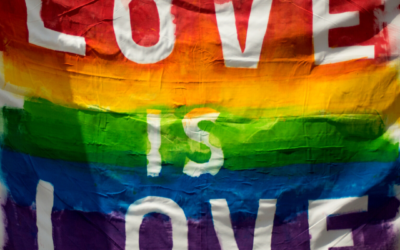Featured image: Ava DuVernay directing a scene in “Selma.” CreditAtsushi Nishijima/Paramount Pictures.
On a swampy afternoon in late June, the director Ava DuVernay stood not far from the Edmund Pettus Bridge in Selma, Ala., that haunted place where, President Lyndon B. Johnson told the country, history and fate met. She was instructing a group of white extras on all the ugly things she wanted them to yell at the several hundred black extras snaking across the bridge, part of a sizable army of cast and crew that had been gathered together for“Selma,” her new movie about the campaign for black voter rights.
That day, Ms. DuVernay was restaging Bloody Sunday, March 7, 1965, when the police violently attacked marchers trying to walk to Montgomery, where they would eventually hear the Rev. Dr. Martin Luther King Jr.’s call out to the world: “How long? Not long! Because the arc of the moral universe is long, but it bends toward justice.” A centrifugal force, Ms. DuVernay rarely seemed to stop moving. As she called “Action!,” and people and horses began to run, smoke flooding the air, it was thrilling to witness a female director bring this agonizing American story to life and, in the process, stake her own claim on our cultural history.
Ms. DuVernay, 42, belongs to what she calls “a small sorority” of black female filmmakers, who are part of another modest American sisterhood: female directors of any color. And with “Selma,” she has done what few female directors get the opportunity to do, which is go large — with politics and history — with a decent budget and serious muscle. Paramount Pictures is releasing the movie on Dec. 25, and the producers include Oprah Winfrey, who has a small role in the movie as an activist, and Plan B, Brad Pitt’s company. Four years ago, Kathryn Bigelow became the first woman to win an Academy Award as best director; Ms. DuVernay has a shot to become the second.
Like many, I had hoped Ms. Bigelow’s Oscar for “The Hurt Locker” would be transformative, and that soon female directors would be accepted as equal to men, and, crucially, hired as equals. But that hasn’t happened. In 2009, when “The Hurt Locker” was released, women made up 7 percent of the directors on the top 250 domestic grossing films, according to an annual report by the researcher Martha M. Lauzen. As of early December, by my count, only 19 women — 7.6 percent — were directors on the top 250 grossing features released this year. “Selma” may increase that percentage, as might another big-studio release, Angelina Jolie’s “Unbroken,” about the Olympic runner and war prisoner Louis Zamperini.
It will take more than these two filmmakers to disrupt the industry’s sexism, which has long shut women out from directing movies and, increasingly, shuts them out on screen, too. Notably, Ms. DuVernay and Ms. Jolie, having made movies about women, have now made the leap to bigger stakes with stories centered on men. I hope their movies burn up the box office, but I also hope they return to movies about women. We need those stories, and these days, female directors are often the only ones interested in them. Gender equality is an undeniable imperative. But it’s also essential to the future of the movies: This American art became great with stories about men and women, not just a superhero and some token chick.
Ms. DuVernay’s path to “Selma” is unusual, not only because she belongs to a small sorority, but also because she came to directing through publicity. After graduating from the University of California, Los Angeles (she majored in English and African-American studies), she had a flirtation with broadcast journalism before landing a publicity job. At 27, she founded her own agency, working on movies by the likes of Steven Spielberg, which embedded her in every stage of the movie process, all the way to award shows. She was on the set of “Collateral” (2004) the moment that she realized what she wanted.

David Oyelowo, center, plays the Rev. Dr. Martin Luther King and Carmen Ejogo plays Coretta Scott King in “Selma.” Credit Atsushi Nishijima/Paramount Pictures.
“I just remember standing there in the middle of the night in East L.A. and watching Michael Mann direct and thinking, ‘I have stories,’ ” she said. “That was the moment I thought: ‘Wow, I could do this. I would like to do that.’ ”
She narrated this origin story back home in Los Angeles in September, as we talked in her house, a midcentury perch overlooking Beachwood Canyon with a view of the Hollywood sign. Hours earlier, she had, in the fashion of 21st century cinema, delivered her cut of “Selma” through a high-speed file transfer. Now people whose opinions mattered — including the producers on the Paramount lot a few miles away and the famous one in Chicago (“Ms. Winfrey,” as Ms. DuVernay calls her) — were looking at “Selma” for the first time.
“Your foot is shaking,” I said. “Are you nervous?”
Ms. DuVernay radiates terrific self-confidence, but I assumed that she was anxious. “No,” she shot back.

Ms. DuVernay, right, at a “Selma” preview with the producers Dede Gardner, left, and Oprah Winfrey, who has a small part in the movie. Credit Alberto E. Rodriguez/Getty Images for AFI.
With its $20 million production budget and the support of a major studio, “Selma” is far bigger than any of Ms. DuVernay’s previous movies. She made her last one, “Middle of Nowhere,” for $200,000. A small-scale, lapidary drama about a woman finding love, though mostly herself, it was beautifully shot by the cinematographer Bradford Young. (They reunited for “Selma.”) It was well received at the 2012 Sundance Film Festival, but, like the rest of the entries that year, it was overshadowed by the juggernaut known as“Beasts of the Southern Wild.” Ms. DuVernay became the first black woman to win the dramatic directing award at Sundance, and while that was gratifying, it didn’t translate into any immediate gains. “No one offered me anything,” she said matter-of-factly.
This is in stark contrast with what happened to Colin Trevorrow, whose first feature, “Safety Not Guaranteed,” was also at the 2012 festival. In what has become a familiar story of male success, he went on to direct the relaunch of a franchise behemoth, “Jurassic World.” Women rarely receive those kinds of big breaks. The director Mimi Leder (“Deep Impact”) and the writer Linda Woolverton (“Maleficent”) have made a lot of money for the industry, but they recently told me they, too, don’t get the calls that you might expect. That no one clamored to hire Ms. DuVernay is even less a surprise given the segregation of American cinema and an industry mind-set that deems that a movie with two black leads is no longer simply a movie but a black movie.
Ms. DuVernay started directing first in documentary, where budgets tend to be low, and you don’t necessarily need to ask anyone’s permission, two reasons so many women may gravitate to the field. She made her first feature, “This Is the Life” (2008), a documentary about a Los Angeles hip-hop scene, for $10,000: check to check as she put it. She subsequently took $50,000 that she had saved to buy a house and used it to make her first dramatic feature, “I Will Follow” (2010), an autobiographical tale about a niece mourning an aunt. Ms. DuVernay released the movie through a distribution company she founded (she’s a busy woman) and sank $100,000 of the profits into “Middle of Nowhere.”
Through it all she kept her day job, which is how she came to “Selma.” In January 2010, The Daily News in New York ran an item about the script, by Paul Webb, and a scene in which Dr. King flirts with a prostitute or, as The News put it, “MLK Flick has Tryst Issues.” (There’s no such scene in the final movie.) Ms. DuVernay was tapped as a liaison between King family members and the filmmakers. Nothing ever came of that, however, because the project fell apart when Lee Daniels, who was set to be the director, left after years of trying to make the screenplay work with the budget he had been given.
Ms. DuVernay said that the first director who considered “Selma” was Mr. Mann, who was followed by an intriguing list of directors that she ticked off with a practiced air: Stephen Frears, Paul Haggis, Spike Lee and finally Mr. Daniels. She said that with the exit of Mr. Daniels the producers “just gave up.” David Oyelowo (pronounced oh-YELL-ow-oh), who plays Dr. King, did not. Ms. DuVernay had cast him in “Middle of Nowhere,” and he believed that she could handle “Selma.” He made his case for her in a letter to Pathé, the company that originally financed the movie. (Paramount came onboard later.)
Mr. Oyelowo, speaking by phone, said: “If Tom Hooper is allowed to do ‘The King’s Speech,’ having not necessarily done films of a much bigger budget for Pathé, then why not? Why not take a punt on her?”
He said Ms. DuVernay had to do some rewriting of the script to work with a budget that was lower than she ended up with. What had been a liability for her — directing with tiny sums of money — became an unexpected asset and, unlike all the male directors, she was able to make the script and budget work together. At some point, Mr. Oyelowo said, everyone realized that she was the one: “If we can’t make it work with her, this film is never going to work. It’s just never going to happen.”
“Selma” is certainly modest when compared to mega-blockbusters, where $200 million production budgets are no longer uncommon. (Throw in more for marketing and distribution.) For independents, though, and especially for women, it’s significant. (The production budget often cited for “The Hurt Locker” is about $15 million.) The day I visited the “Selma” set, I was struck by how Ms. DuVernay had made the leap from low-budget filmmaking with a handful of people to commanding hundreds. “I just need some white racists on this side!” she yelled at one point. She later complained that the day had been chaotic, but she looked fully in command, her long hair tucked under a scarf, whether riding shotgun on a cart with Mr. Young or on the ground. Later, when lunch was called, Ms. DuVernay greeted the extras who poured off the bridge, calling out thanks and giving and receiving hugs. Among the marchers were men and women who had been there when the tear gas and blood were real. The march, she said, is “a sensitive subject matter to that community,” and she was navigating through a weighty legacy.

Emayatzy Corinealdi in Ms. DuVernays’s earlier feature “Middle of Nowhere.” Credit Participant Media.
At the same time, I was watching a very smart filmmaker command a veritable army partly with hugs. Movie sets can be very unfriendly spaces for women, as she knows. Before she started shooting, she recalled, she sat down with “every single person” on the crew and said, “I’m inviting you to work with me, so this is going to run in the way that I want it to run.”
Even before “Selma,” Ms. DuVernay had beaten the terrible odds that women face by making her own movies on her own terms. It has brought her new attention, but, in deciding what’s next, she needs to choose carefully. Women don’t always get second chances if they stumble, and they don’t have a long, rich history of female filmmakers to learn from. “Do I play that game and try to figure out what the next move is?” Ms. DuVernay wondered. “Or can I be like these guys that just do whatever the interesting stuff is?”
One of those guys is Cary Fukunaga, who went from directing indies like“Sin Nombre” to the HBO show “True Detective.” “The way that these men move,” Ms. DuVernay said admiringly. “The more proven way is to just stay a good girl,” she added “but the artist in me wants to move like Fukunaga’s moving.”
I checked in with Ms. DuVernay again in November after she had locked “Selma.” Screenings had gone well, and Oscar talk was building. She was tired and after two long years on the movie, suddenly unemployed. She won’t be for long. No matter what happens, she believes she can always raise enough money to shoot a new movie.
And while she wants to continue making movies about women, “Selma” has opened her up to new ideas about how she too can move. Her earlier narrative features, she said, were “very interior, intimate stories,” but, “Selma,” with its set pieces and action scenes, has freed her to think about telling larger stories about women.
“It’s not really all about money,” she said, parsing the challenges women directors face. “Some of it is about allowing our imaginations — and giving ourselves permission — to go outside.”
This article is courtesy of: http://www.nytimes.com/2014/12/07/movies/ava-duvernay-makes-a-mark-with-selma.html?_r=3
The Audience Awards is film’s social network connecting audiences to films, filmmakers, film schools and film festivals. The Audience Awards hosts short film competitions where the audience chooses the best films.





